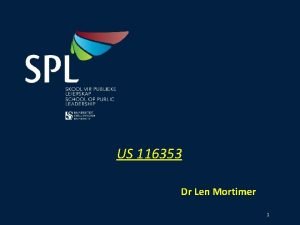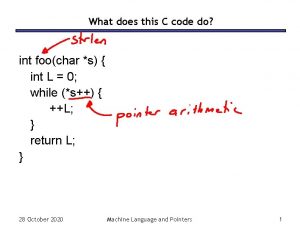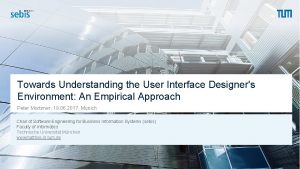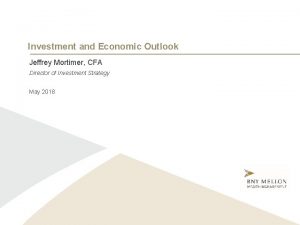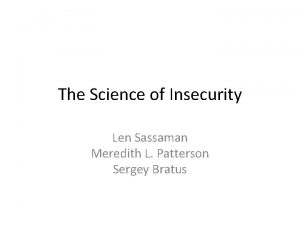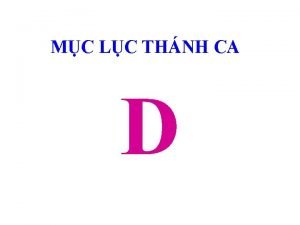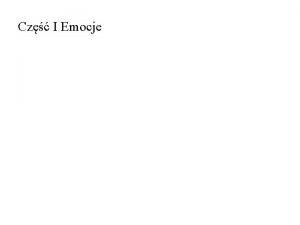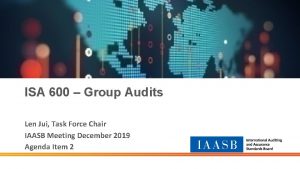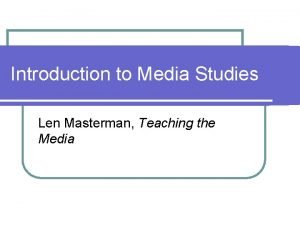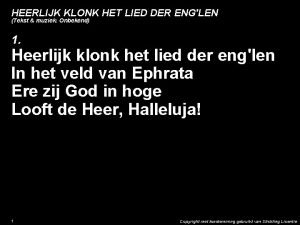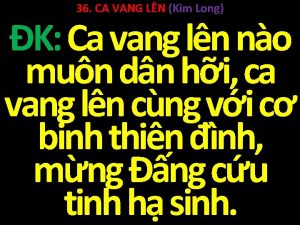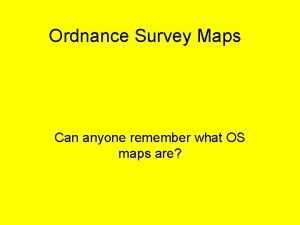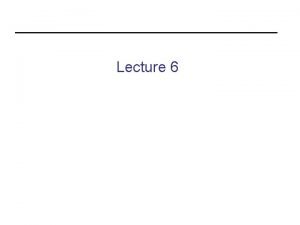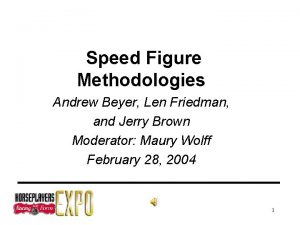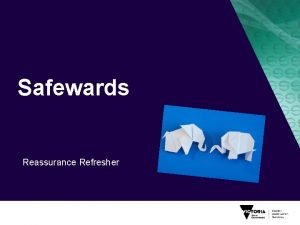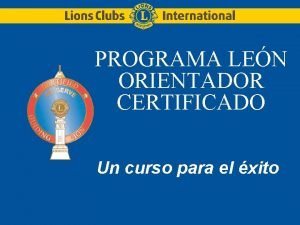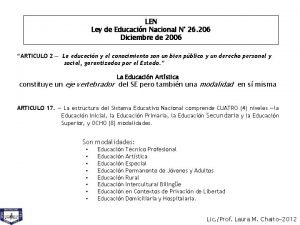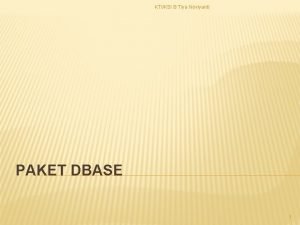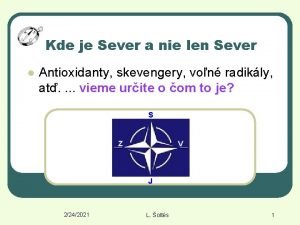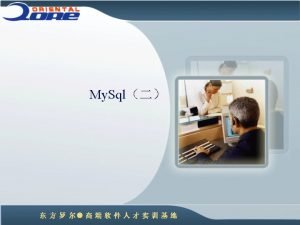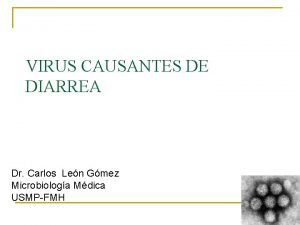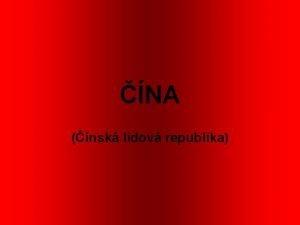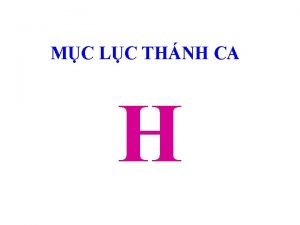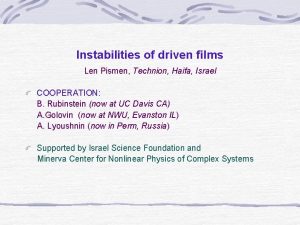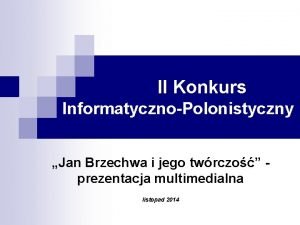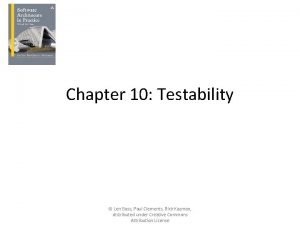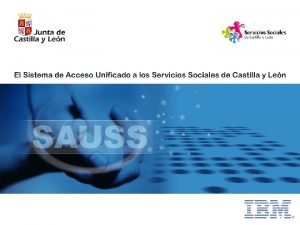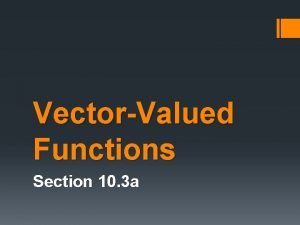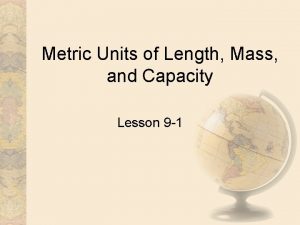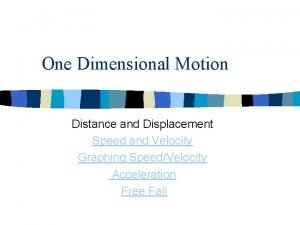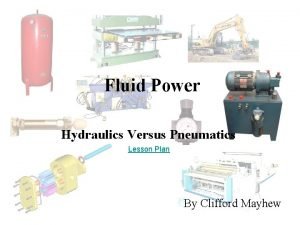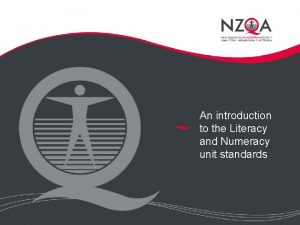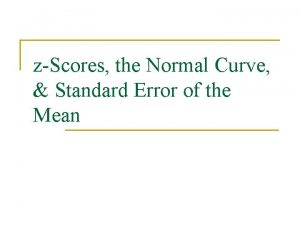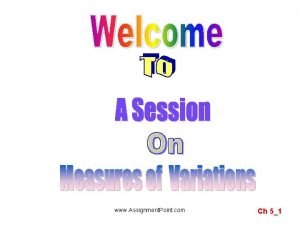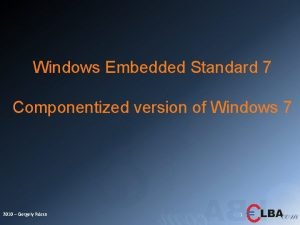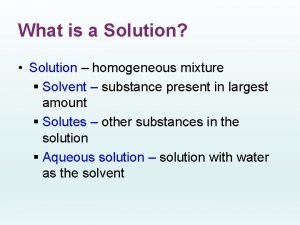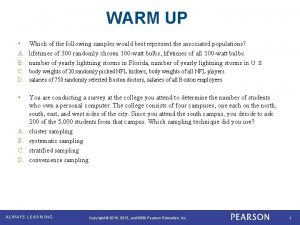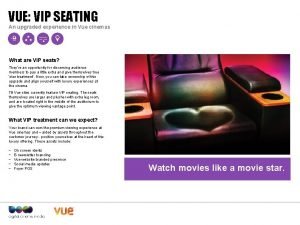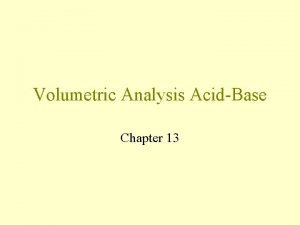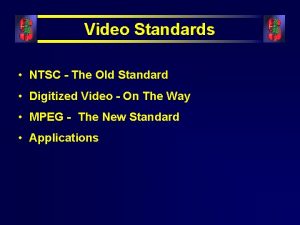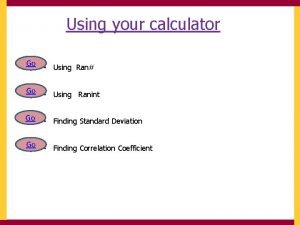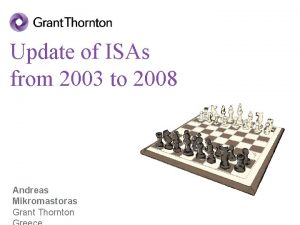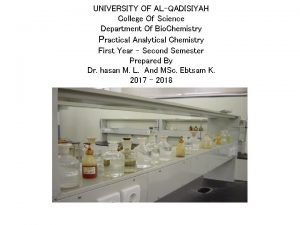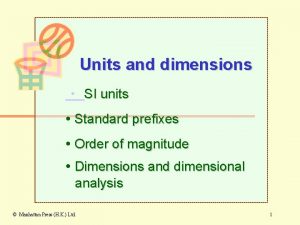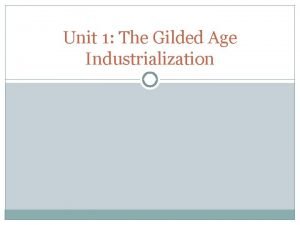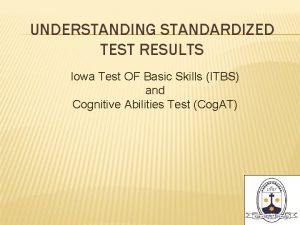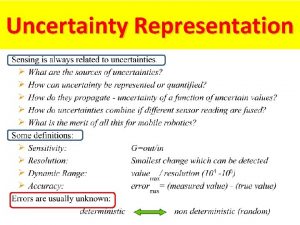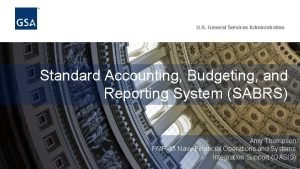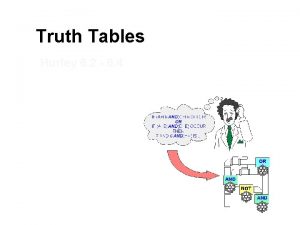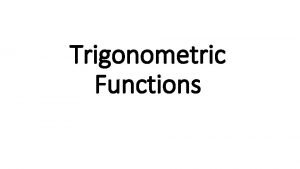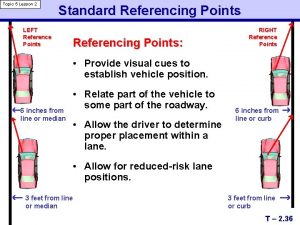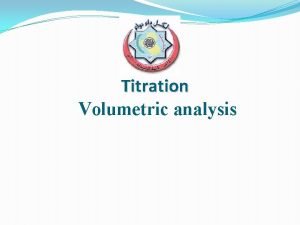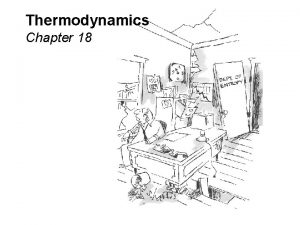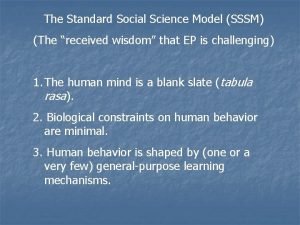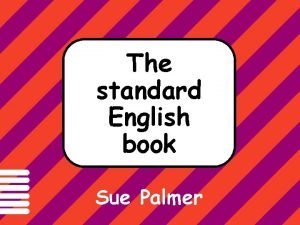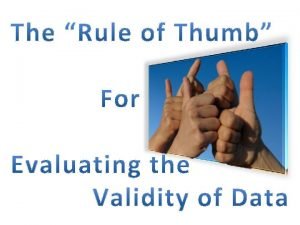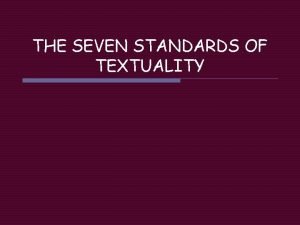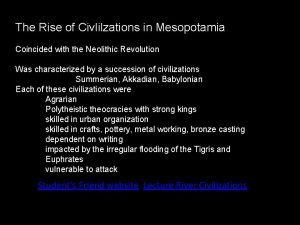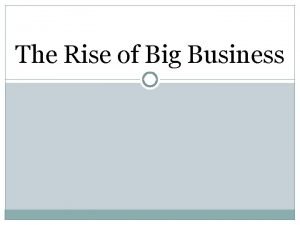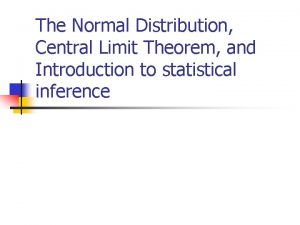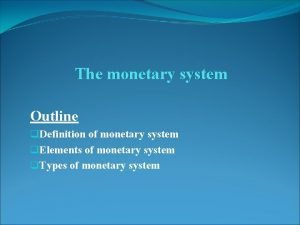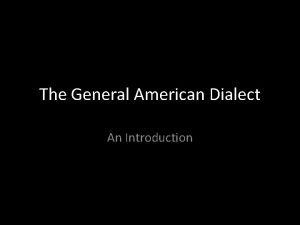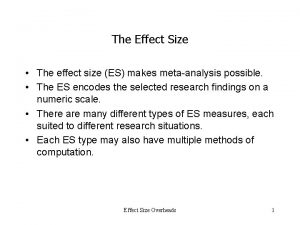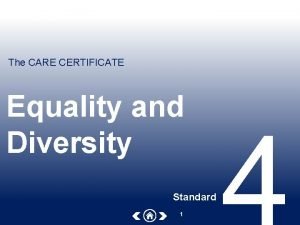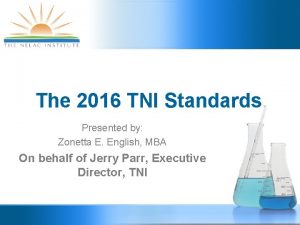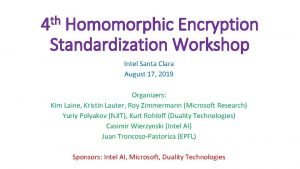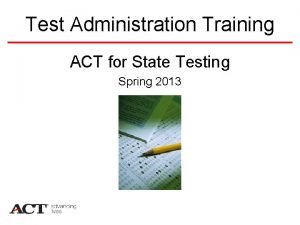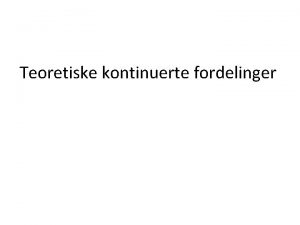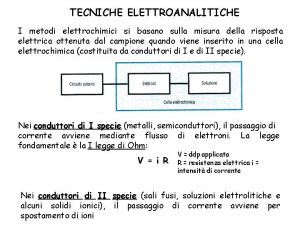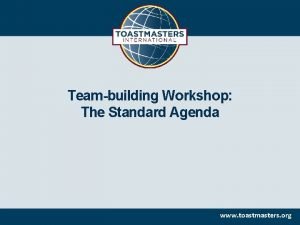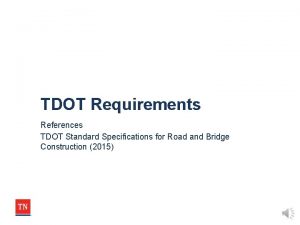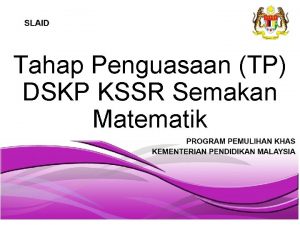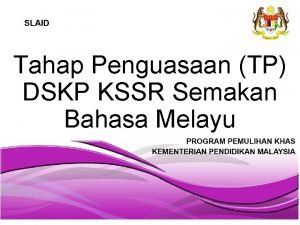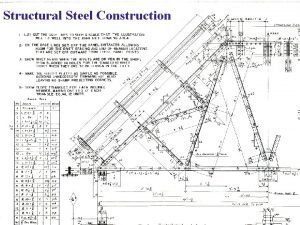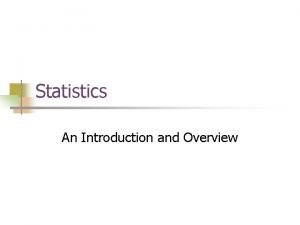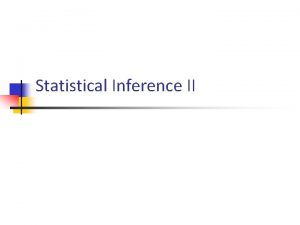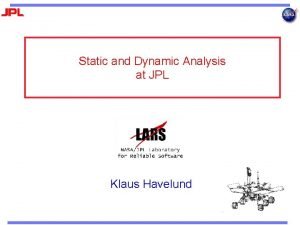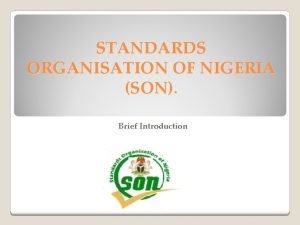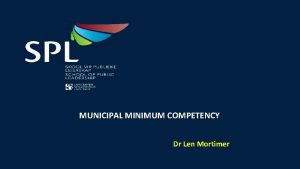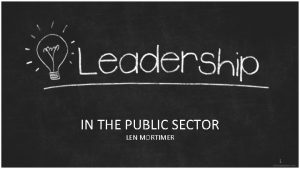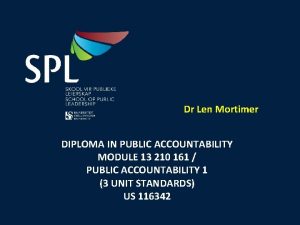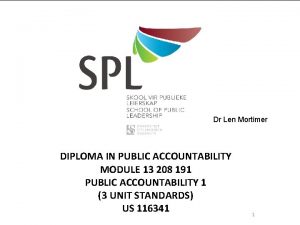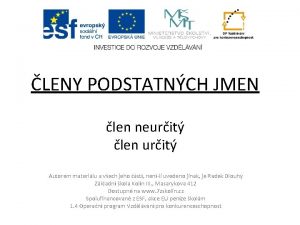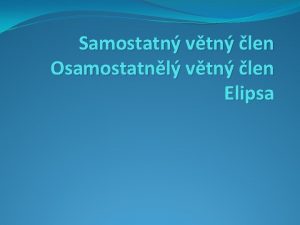US 116353 Dr Len Mortimer 1 Unit Standard
































































































































































- Slides: 160

US 116353 Dr Len Mortimer 1

Unit Standard 116353 Supply Chain Management 2

Unit Standard Outcomes (6) • OUTCOME 1: Apply legislative requirements governing supply chain management • OUTCOME 2: Manage risks in supply chain management processes • OUTCOME 3: Delegation supply chain management powers and functions • OUTCOME 4: Comply with required ethical standards applied in municipal supply chain management • OUTCOME 5: Develop and evaluate a municipal supply chain management policy 3

Unit Standard Purpose (8) The unit standard and module purpose is to provide learners with a broad understanding of Supply Chain Management (SCM) in the public sector and specifically the municipal environment, as well as an understanding of the legislation, regulations and guidelines within which SCM occurs. Key aspects of the best practice model and supply chain management policy will be explained analysed. 4

ASSESSMENT INSTRUCTIONS FOR TAKE HOME ASSIGNMENT and TEST Available on the website 5

US 116353 • Question • You have been appointed as the Director: Supply Chain Management. As a first responsibility you scheduled a meeting with the external auditors. The Auditor-General (AG) report for the City of Matlosana Local Municipality is loaded on the website. The report should be downloaded and used to answer the question below. 6

US 116353 • Refer to findings of the AG report, as it relates to the procurement processes and analyse each of the findings individually. Use the course notes, the latest SCM regulations, your own municipalities’ SCM policy, and identify detailed policies and controls that should be implemented to reduce the number of findings reported by the external auditors. Each individual finding should at least have three recommendations that you will apply to enhance the control effectiveness in the SCM directorate. 7

US 116353 - Assessment Plan CLASS TEST Test learner’s understanding of: Supply chain management and applicable financial and other legislation, regulations and policy. ACQUISITION DELEGATIONS DISPOSAL SCM POLICY 8

READ List of abbreviations (21 – 23) Glossary of terms (23 – 25) 9

Revision PP regulations • The main changes contained in the revised regulations are as follows: • Previously bidders scored a maximum of 80 or 90 points for price, and 20 or 10 points for black ownership and for promoting specified RDP goals. The points for price will remain unchanged, while bidders will now score up to 20 or 10 points for their B-BBEE status level of contribution. 10

• All bidders have to submit BEE rating certificates, issued by either verification agencies accredited by the South African Accreditation System (SANAS) or by registered auditors approved by the Independent Regulatory Board for Auditors (IRBA). 11

• The new regulations became effective from 7 December 2011 to allow enterprises to become BEE rated. PREFERENTIAL PROCUREMENT POLICY FRAMEWORK ACT, 2000: PREFERENTIAL PROCUREMENT REGULATIONS, 2017 • AMENDMENTS • 80/20 preference point system for acquisition of goods or services for Rand value equal to or above R 30 000 and up to R 50 million • 90/10 preference point system for acquisition of goods or services with Rand value above R 50 million 12

TREASURY CIRCULAR MUN NO 11 OF 2014 • ISSUING OF STANDARD OPERATING PROCEDURE MANUAL FOR EXPENDITURE MANAGEMENT • The manual covers the following sub-processes of the expenditure cycle: 137 pages 1. Chapter 1: Ordering 2. Chapter 2: Receiving 3. Chapter 3: Invoicing 4. Chapter 4: Cheque payments 5. Chapter 5: EFT payments 6. Chapter 6: Reconciliation. 13

• TENDER & QUOTATION LEGISLATIVE REQUIREMENTS: • Regulations and Policy must be read together – (Numbering are the same) 14

CHAPTER 1 MMC US 116353 Unit 1 – Introduction to SCM in the Public Sector (29) 15

Unit 1 – Introduction to SCM in the Public Sector (30) Learning outcomes: • Understand the need for transformation of SCM • Understand the legislative framework, regulations and guidelines for SCM and be able to apply these • Be able to identify the key SCM principles and the strategic nature of SCM in the delivery of services • Understand the key elements, concepts and objectives for inclusion in SCM policy – aligned to legislation and regulations • Be able to identify the role players, structures, and processes required to effectively perform the SCM function • Understand the delegation of powers and responsibilities within SCM • Understand the ethical standards and codes of conduct as relate to SCM 16

Key concepts (30 – 31) 17

What is Supply Chain Management (SCM)? (31) “SCM in the public sector can be defined as an integral part of Financial Management that seeks to introduce internationally accepted best practice. It bridges the gap between traditional methods of procuring goods and services and the balance of the supply chain whilst addressing procurement related matters that are of strategic importance. ” (Policy to Guide Uniformity in Procurement Reform Processes in Government: 2003) I Smith 2003 18

Definition of SUPPLY CHAIN MANAGEMENT “Supply Chain Management (SCM) is the process of planning, implementing and controlling the operations of a supply chain with the purpose to satisfy customer requirements as efficiently as possible. ” “The supply chain is the combination of all parties (e. g. external suppliers, partner organisations, internal corporate service units etc. ) both inside and outside the organisation, involved in delivering the inputs, outputs or outcomes that will meet a specific public sector requirement. ” 19

Perspectives/Dimensions of: THE SUPPLY CHAIN DEMAND SUPPLY Point of origin Consumption Transactions Planning Budgeting Sourcing/Procuring Demand Acquisitions Management Receiving Storing Distributing Logistics and Inventory Distribution/disposal Management Management Information flows Goods/services flows Financial Flows 20

Characteristics of SCM (34) • Designed to optimise factors of material cost, quality and service • Includes ongoing monitoring and research into the organisation’s supply chain environment • Consolidates various operating activities to ensure a more integrated approach • Collaborates with the I/T function to develop a data management system which facilitates strategic supply planning • Incorporates improved supplier relationship management: – Identifies, evaluates, elects, manages and develops suppliers to realise supply chain performance – Develops longer term win-win relationships between the buying entity and specifically-selected suppliers – Focuses on direct, concrete, on-site and frequent help to suppliers in exchange for dramatic and continuous performance 21 improvements

History of SCM in the Public Sector (37 – 41) 22

The General Procurement Guidelines (45) The Five Pillars of Procurement: (45) • • • Value-for-money Open and effective competition Ethics and fair dealing Accountability and reporting Equity 23

FIVE PILLARS OF PROCUREMENT p 46 -50 • Proper and successful government procurement rests upon the five pillars of procurement • One of the pillars broken – entire system fails FIVE PILLARS OF PROCUREMENT 1. VALUE-FOR-MONEY 2. OPEN AND EFFECTIVE COMPETITION 3. ETHICS AND FAIR DEALING 4. ACCOUNTABILITY AND REPORTING 5. EQUITY 24

SCM legislative framework (52) Systems/ Structures Acts MFMA PFMA BBBEEA/ guidelines SCM policies, procedures PAJA Asset transfer reg. Codes of Conduct The Constitution EXTRAS N/T Regs and guidelines Policies procedures N/T SCM regs, guides, circulars PPPFA and N/T regs 25

The Legislative framework p 54 Constitution S 216(1), 217(1), (3), 215 -219 PFMA S 5, 76(4), (c), PPPFA See next slides MFMA S 112(1), 26

The Constitution p 54 S 216(1) “National legislation must establish a national treasury and prescribe measures to ensure both transparency and expenditure control in each sphere of government, by introducing: • Generally recognised accounting practice • Uniform expenditure classifications • Uniform treasury norms and standards” 27

FINANCIAL MANAGEMENT LEGISLATION p 54 Constitution S 217(1)“When an organ of state in the national, provincial or local sphere of government, or any other institution identified in the national legislation, contracts for goods or services, it must do so in accordance with a system which is fair, equitable, transparent, competitive and cost-effective. ” S 217(3) issues national legislation with the requirement to prescribe a framework which provides for preferential procurement to address social and economic imbalances of the past. 28

MFMA p 55 Sect 112(1) “The Supply Chain Management policy of a municipality must be fair, equitable, transparent, competitive, and cost-effective and must comply with a prescribed regulatory framework for municipal supply chain management…” 29

ENABLING LEGISLATION FOR THE PREFERENTIAL PROCUREMENT SYSTEM (PPPFA) p 55 • PPPFA gives effect to S 217 (3) of the Constitution • Provides framework for implementation of procurement policy contemplated in S 217(2) of the Constitution • Provide for matters connected therewith 30

PPPF Act and BBBEE Act Together with the Preferential Procurement Regulations gives effect to S 217(3) of the Constitution (56) This was followed by the Broad Based Black Economic Empowerment Act (57) 31

SCM Role-players, Functions and Support structures (59) • • National Treasury Provincial Treasury Municipal Council and Councillors The Accounting Officer Supply Chain Management Units Bid Specification Committee Bid Evaluation Committee Bid Adjudication Committee 32

National Treasury role (62) • Establish an SCM office • Monitor implementation of SCM across government • Develop policies, procedures, practices etc. for all spheres of government – to achieve broader policy objectives • Policy for consultants, construction standards, transversal contracts, reporting requirements • Receive complaints from bidders/suppliers • Maintain a “bad list” 33

Provincial Treasury role • Establish provincial SCM offices • Monitor province and municipal implementation of SCM • Promote co-operative governance • Measure improvements in SC performance • Take intervention measures when necessary 34

Municipal Councils and Councillors p 64 • Oversee financial management and service delivery • Approve the SCM policy • Monitor and evaluate SCM implementation process through regular reporting 35

Political and Administrative structures p 65 MUNICIPAL COUNCIL Council Committees Executive Mayor or Committee Advisory Committees Accountability Policy and Direction COMMUNITY Municipal Manager Administration 36

The Financial Governance Framework (66) Responsible for Oversight over Accountable to Council approving policy Mayor Community Mayor Policy, budgets, AO Council AO Outputs and Implementation Administration Mayor, Council CFO Outputs Financial AO Management 37

Accounting Officer (68) • • Is ultimately accountable for all expenditure Implementation of SCM system Establish a SCM unit Develop SCM policy Establish the SCM committees Ensure adequate controls Ensure adequate anti-corruption mechanisms Etc. 38

SCM Units p 69 • SCM units must be established within all municipalities • Units must have necessary capacity and skills • The necessary delegations must be established 39

Bid Specification Committee 70 • Must approve specifications • Specifications must be reasonable, fair, and meet necessary standards • Must establish a points systems and evaluation criteria for bids • Determine BEE goals 40

Bid Evaluation Committee 71 • Evaluate bids i. t. o. the predetermined specifications • Evaluate bidders i. t. o. – their ability to deliver, – SARS status, – N/T’s “bad list” 41

Bid Adjudication Committee 72 • Must consider the BEC recommendations • Make the final award • Establish: That all documentation was in order Disqualifications are justified Scoring has been fair, etc. Bidders declarations of interest have been considered – Etc. – – 42

COMMITTEE SYSTEM FOR COMPETITIVE BIDS cont. p 74 PLEASE NOTE: • Neither a member of a Bid Evaluation committee, nor an advisor or person assisting the Evaluation Committee may be a member of a Bid Adjudication Committee. • The AO may at any stage of the bidding process, refer any recommendation made by the BEC or the BAC back to that committee for reconsideration of the recommendation. • No municipal councillor or public sector official should be allowed to do business with the State. 43

SUPPLY CHAIN MANAGEMENT POLICY p 74 S 111 of the MFMA is very specific in the requirements of a Supply Chain Management Policy (SCMP) within a municipality and gives Effect to S 217 of the Constitution. The SCMP must • be fair, equitable, transparent, competitive and costeffective; • comply with the regulatory framework for municipal supply chain management; • be consistent with other applicable legislation and with the national economic policy concerning the promotion of investments and doing business in the public sector; • not undermine the objective of uniformity in SCM systems between organs of state in other spheres; 44

SCM Policy 74 Must cover: • The full range of processes – including tenders, quotations, auctions and other types of competitive bidding • When a particular process may be used • Procedures for more flexible processes where the value is below the prescribed amount • Open and transparent processes for tenders or other bids • Competitive bidding processes – in which only pre-qualified persons may participate • Procedures for opening, registering and recording of bids • For evaluating of bids, negotiating final terms, approving of bids • Screening processes • etc 45

SCM Policy p 76 Include measures for: • Combatting fraud and corruption, • Combatting favouritism and unfair and irregular practices • The invalidation of recommendations or decisions that were unlawful or improperly made • Contract management and dispute settling procedures • The delegation of SCM powers and duties. 46

Delegation of SCM Powers and Duties (78) • S 79, 82, and 106 of the MFMA allow the AO to subdelegate decision-making powers to officials. • Delegations must be in writing and approved in line with the SCM policy. • Delegation should relate to the acquisition of goods and services as well as the disposal an letting of assets • Delegations should only be i. t. o. procurement value (see page 61) 47

DELEGATION OF SUPPLY CHAIN MANAGEMENT POWERS AND DUTIES p 78 CONTRACT AMOUNT(VAT INCLUDED) SUB-DELEGATIONS ALLOWED Above R 10 million May not be sub-delegated by an Accounting Officer Above R 2 million, but not exceeding R 10 million May be sub-delegated but only to: • Chief Financial Officer (CFO) • A senior manager; or • A Bid Adjudication Committee (BAC) of which the CFO or senior manager is a member. Not exceeding R 2 million May be sub-delegated but only to: • Chief Financial Officer (CFO) • A senior manager; or • A manager directly accountable to the CFO or senior manager; or • A BAC not including the CFO or senior manager. 48

Reporting in terms of delegated powers p 80 • The amount of the award • The name of the person to whom the award was made; and • The reason why the award was made to that person. 49

Oversight p 80 -81 RESPONSIBLE TIMELINE REPORT PRESENTED TO CONTENTS Within 30 days Council of the PERSON AO of municipality Report on the implementation of the end of the municipality. SCMP of the municipality and any financial year municipal entity under its control AO of municipal Within 20 days entity of the end of the entity. Subsequently SCMP of the municipal entity financial year Board of Directors of Report on the implementation of the to AO of municipality for reporting to municipal council. AO of municipality Within 10 days Mayor Report on the implementation of the or AO of municipal of the end of Board of Directors SCMP of the municipality and any entity each quarter municipal entity under its control Report on the implementation of the SCMP of the municipal entity 50

External Reporting Requirements 82 • Information on successful bids should be made available on the municipality’s website – stating: – – – Name of successful bidder The contract price Brands Delivery basis Etc. • Any bidder requesting such information should be given the reason for why his/her bid was unsuccessful 51

Ethics and Codes of Conduct – in SCM 82 It is the responsibility of the AO, through the SCM policy, to: • Take reasonable steps to prevent abuse of the SCM system • To investigate allegations against an official or other role-player of fraud, corruption, favouritism, unfair or irregular practices – and to take appropriate steps where required • To ensure the bidder is not on the official list of defaulters or restricted suppliers • To reject a bid where there is tax default or previous failure to perform 52

Combating abuse of SCM p 83 53

The definition of fraudulent or corrupt activities 84 Corrupt practice Means the offering, giving, receiving or soliciting of anything of value to influence the action of a public official in the selection process or in contract execution Fraudulent practice Means a misrepresentation of facts in order to influence a selection process or the execution of a contract to the detriment of the Accounting Officer, and includes collusive practices amongst bidders/contractors designed to establish prices at artificial, non-competitive level and to deprive the Accounting Officer of the benefits of free and open competition. 54

Ethical Standards and Codes of Conduct (85) A code of conduct is a set of moral principles or values used by an organisation to steer the conduct of both the organisation itself and its employees in all their business activities both internal and in relation to the outside world. (Institute of Management) 55

Ethical Standards and Codes of Conduct p 85 The policy on SCM related ethical behaviour should cover: • Acceptance of gifts, etc. • Dealing with suppliers • Handling quotations and bids • Dealing with confidential information • Behaviour in negotiations • Possible conflicts of interest 56

Ethical Standards and Codes of Conduct p 85 There should be: • Code of conduct for Councillors (MSA) • Code of conduct for municipal staff • Code for SCM practitioners • Code for bid Adjudication Committees 57

Ethical Standards and Codes of Conduct p 86 The SCM Practitioners code should cover: Conflicts of interest Accountability arrangements Openness requirements Confidentiality requirements Prevention of “combative practices” 58

Summary of Unit 1 Page 86 59

LEARNING ACTIVITY p 88 60

Learning task Page 88 to 93 61

Perspectives/Dimensions of: THE SUPPLY CHAIN DEMAND SUPPLY Point of origin Consumption Transactions Planning Budgeting Sourcing/Procuring Demand Acquisitions Management Receiving Storing Distributing Logistics and Inventory Distribution/disposal Management Management Information flows Goods/services flows Financial Flows 62

CHAPTER 2 MMC US 116353 Unit 2 - Elements of a World-class SCM model: Demand Acquisition Management 63

Unit 2 – Elements of a World-class SCM model: Demand Acquisition Management (95) Outcomes: • Be able to identify key elements of government’s SCM model • Have a more detailed understanding of Demand Management and how the SCM function must be incorporated into the overall strategic planning process of the municipality in order to ensure efficient and effective delivery of services • Understand how a 3 year procurement plan can assist the municipality in developing strategic relationships with suppliers/service providers 64

Outcomes continued: • Understand the various methods of acquiring goods and services as well as the specific processes to be followed depending on the threshold of a particular purchase/bid • Understand the implementation requirements of the PPPFA and regulations, especially with regard to the Preferential Points System and calculations thereof. 65

Outcomes continued: • Know where to source the correct documentation to be included in bid documentation and which documentation is to form the content of the legally binding contract between the municipality and the successful bidder • Understand certain specialised sourcing such as the procurement of consulting skills, bulk water and electricity, information technology equipment through the State Information Technology Agency (SITA) 66

Introduction to Government’s SCM model (98) The model: • Subscribes to international best practice • Forms an integral part to management and is linked directly to the budget planning process • Addresses government’s preferential procurement objectives • It attempts to add value at every stage of the supply chain 67

Government’s SCM model (101) SUPPLY CHAIN MANAGEMENT ACQUISITION LOGISTICS PPP objectives Infrastructure systems DEMAND DISPOSAL SUPPLY CHAIN PERFORMANCE Risk management and contract management DATABASE/S 68

Demand Management (102) "Demand Management" is about having a unified view of all demand from programmes/projects in your organization so you can align and prioritize the requests with the needs of your organization. It also provides a way to control the life cycle of the demand process. Demand Management for an organization must accomplish three things: • Provide a governance mechanism which includes a best practice framework. • Provide a standardized method for collecting requests from the organisation. • Accumulate all requests in a central repository to keep everything organized and provide visibility. 69

The Demand Management system (102) The system must: • Include timely planning and management processes • Consider any benefits of economies of scale • Provide for the compilation of the required specifications • Include appropriate industry analysis and research 70

The planning process (103) 7. 1. 4 Strategic SCM Key steps: • Consider from where requirements can be sourced • Assess market characteristics and decide how the market is going to be approached for external sourcing • Consider aspects of BEE, SMMEs, HDI extending opportunities for supplying goods/services, making use of labour intensive methods etc. . • Establish total cost of ownership of a particular asset • Development of specifications / terms of reference 71

The Demand Management process (104) “An effective system of SCM requires an Accounting Officer …. to ensure that the resources required to support the strategic and operational commitments of an institution are properly budgeted for and procured at the correct time. Planning for the procurement of such resources must take into account the period required for the competitive bidding processes. It must therefore be emphasised that a lack of planning does not constitute a reason for dispensing with the prescribed bidding processes” National Treasury 72

Key SCM steps in Strategic Planning process Page 104 - 106 73

Flow chart of the Demand Management process Page 107 74

Development of a Procurement Plan (108) • The plan is useful in assisting municipalities in defining their SCM needs aligned to the IDP and SDBIP. • Alignment with the IDP is critical in the case of capital projects. • The plans should be undertaken by a crossfunctional team and should consider: – – Expenditure and growth trends Types and quality of goods/services Estimates of quantities and timing of delivery General availability of goods/services – and potential alternatives. 75

Development of a Procurement Plan continued… (108) The procurement plans are consolidated. This assists in: • Identifying or verifying areas where joint bids can be undertaken to achieve savings and strategic alliances with suppliers • Encouraging a more competitive market and improved supplier and municipal planning • Suppliers respond better when given advance warning These plans are indicative plans and do not commit the municipality to its intentions. 76

Development of a Procurement Plan continued… (108 -) Plan includes the following detail per procurement: • Capital or operating budget purchase? • Category of spend • Vote and accounting code • Estimated value • Description/specifications/terms of reference • Area where required • Department specific or Municipality wide • Date current contract expires • Contact person and contact details 77

Preparation of specifications (109) The following should be considered: • Should clearly and precisely indicate the work to be carried out, the location, goods to be supplied, minimum performance requirements, etc. • Bidding documents should define the tests, standards etc. to be employed • Drawings to be consistent with text of the specifications • Specifications to be based on relevant characteristics • References to brand names etc should be avoided 78

Needs assessment, Market analysis and Industry supply analysis (110) • Once the internal assessment has been documented in the Plan, external analysis is necessary • SCM strategies based on market and specific industry research/analysis which respond to the needs identified must be undertaken • When analysing the external environment two aspects should be considered: – Supplier market (110) – Supplier networks (110) 79

Market Assessment table Page 111 80

Supplier relationship management and strategic alliances (112) • Because municipalities and suppliers are strategically linked through systems which allow for the flow of materials, services, information and funds – an integrated management philosophy is required • Municipalities can positively influence supplier performance by managing the relationship in an agreed framework • In order to establish strategic alliance the following should be assessed: – Mission-critical municipal processes and functions – Key internal and external dependencies – External influences that may impact of critical processes and functions 81

Transactional vs. Alliance relationships Page 113 82

The Contingency model to evaluate strategic alliances (114) • Developing strategic alliances is aligned to the contingency view regarding the characteristics of the given situation • It calls for fitting the structure of the organisation to various possible situations • Decisions are regarded as strategic if they are of significant to the future of the municipality e. g. Entering into a PPP or a long term contract. The wrong decision could have disastrous service delivery, financial, etc. consequences • It is therefore critical to study how the circumstantial factors affect the decision-making process and the sought after outcomes 83

Appropriateness of Strategic Alliances (115) • The development of strategic alliances must always be considered in the context of the SCM legislation and regulations • The possibilities of developing a strategic alliance should be highlighted in the tender documentation. 84

ACQUISITION MANAGEMENT (116) • Involves the management of procurement to ensure that: • Goods/services are only procured i. t. o. authorised processes • The expenditures are i. t. o. an approved budget • Threshold values of different procurement processes are adhered to • Bid documentation, evaluation and adjudication criteria and general conditions of contract accord with the legislation • Treasury guidelines and regulations are adhered to • In general: – Compile bid documentation including evaluation criteria – Evaluate bids i. t. o. evaluation criteria – Ensure proper contract documentation is signed 85

VAT • 15 references to VAT in model policy –all vat included IN THRESHOLDS STATED 86

Public invitation of Bids (128) • According to section 22 of the Municipal Supply Chain Management (SCM) Regulations, the bid needs to be advertised for a minimum period of not less than 30 days before closure in the case of: • transactions over 10 million rand (VAT included), or • of a long term nature, • or 14 days in any other case. If the closing date for submission of bids is less than the 30 or 14 days requirement, then the reasons were recorded to be on the grounds of it being an urgent or emergency case or in exceptional cases impractical to be advertised for the required number of days. 87

• A long term contract in terms of the SCA Policy and the SCM Regulations means a contract for a period exceeding/over one year. In terms of the Preferential Procurement Policy Framework Act, 5 of 200)(“PPPFA”) a “contract” is an agreement resulting from the acceptance of a tender by an organ of state. 88

Uniformity in SCM practices (116) Is ensured through: • Uniformity in bid procedures, policies and control measures, including: – Uniform procurement policy – Easy to interpret, cost effective, quick, transparent bidding procedures – Uniformly applied SC system across government • Uniformity in bid documentation and contracts: – Documents must define the rights, risks and obligations. The nature, quality, quantity of the goods/services – Documents must include bid conditions, specifications, the bid itself, delivery standards 98

Range of Procurement processes Page 118 - 120 99

Database of Accredited Prospective Providers (120) • The AO is required to compile a list of accredited prospective providers – and to ensure: • The list is used to promote the PP regulations and BBBEE Act • Annually invite new prospective providers to apply for inclusion • The listing criteria include compliance with: – SARS clearance requirements – Occupational Health and Safety Act • The list is updated at least quarterly 100

Information required for Quotations (121) Must contain: • Full name • ID number or company registration number • Tax reference and Vat reference number • Authorisation to obtain a SARS clearance certificate • Whether the provider is in the service of the state or has been in the previous 12 months • Whether the spouse, child or parent of the provider is in the employ of the state or has been in the past 12 months 101

Negotiations with Suppliers (122) Can only be done with AO approval and in the following circumstances: • Urgent needs for goods, works or services • On the occurrence of a catastrophic event where other procurement methods are impractical • Emergency cases • Bidders were identified through a competitive bidding process The AO must record and approve the reasons for such deviations or ratifications and report quarterly to the Council and include a note in the annual financial statements 102

Process for Competitive Bidding (122) • Goods/services in excess of R 200 000 may only be procured through a competitive bidding process • The objective of this process is to provide all prospective bidders with timeous and adequate notification of the requirement – and an equal opportunity to bid. 103

Deviations and ratifications • Page 124 104

Standard Competitive process (124) Per the NT SCM guide for AO’s • Properly plan for, and accurately estimate the costs of the goods/services • Compilation of bidding documentation • Public Invitation for bids • Handling, opening and recording of bids submitted • Evaluation of bids • Contracting with winning bidder 105

Bid Documentation: page 125 Key inclusions: • Evaluation and adjudication criteria • Compel declarations of conflict of interest • Requirement of SARS certification • Additional requirements for bids above R 10 m • Statement that any outstanding disputes must be settled • Details of surety required • Certificate from Dept. of Labour indicating compliance 106

Public Invitation of Bids (128) • Must be publically advertised • Must state: – Closure date (as per regulations) – That correct documentation must be used • The AO can approve an earlier closing date in the case of urgent or emergency situations • Bids must be sealed 107

Handling, opening of bids (129) • Bids and quotations must be opened in public – as soon as possible after closure date • The AO must: – Record all bids in a register – Make the register available for inspection – Make public the bidders as well as the winning bidder • No late bids will be considered 108

Evaluation of Bids (129) • The AO must appoint a Bid Evaluation Committee for evaluation of the bids received • The Committee is required to evaluate all bids received and to submit a report and recommendations to the Adjudication Committee regarding the awarding of bids. 109

Negotiations with bidders (130) • No communication is allowed with bidders and prospective providers after the closing date and the date of notification • Unauthorised communication may lead to the disqualification of a bidder • The Head of SCM may communicate with a bidder during the period in particular circumstances middle page 130 110

Discounts and Prices (130) • Unconditional discounts which have been offered may be taken into account when calculating prices • Where prices are offered for different periods of the contract, the price period should be considered as a firm price • Evaluation of bids i. t. o. the PPPFA and its regulations must be evaluated in accordance with the prescribed points system • LG refer to 2011 regs not 2017 111

80/20 and 90/10 • 2017 REGULATIONS PPPFA • R 50 million 112

Clearing successful bidders and Awarding contracts (133) Steps to be taken: • Confirm no conflicts of interest • Assessment of possible risks of performance failure • Tax clearance • “Restricted persons” clearance • Negotiations regarding final terms of the contract • Signing of contract and service level agreement 113

Requirements for a valid contract (134) • A valid, binding contract is critical between the municipality and the successful bidder – especially for longer term contracts • Certain principles must be in all contracts: – Requirements for a valid contract (8. 1. 7. 2) – Breach of contract – Rules governing termination 114

Contract Administration (135) • Contract management is essential • Four key areas of administration: 1. Price adjustments – – Escalation clauses (135) Rate of Exchange fluctuations (136) 2. Amendments/cancellations/variations and transfers 3. Poor performance 138 4. Restrictions imposed on contractors, shareholders and directors 138 115

Specialised Procurement (141 - 143) • • Consultancy Services ECSA fees exclude VAT Banking Services IT goods and services Contract approved by other organ of state Bulk service purchases Building, engineering or construction works Public, private partnerships Unsolicited bids 116

Consultancies (144) • Consultants to be appointed i. t. o. NT SCM guide for Accounting Officers • It should be ensured: The consultant is appropriately qualified The consultant is not treated as an employee The consultantcy is subject to a formal contract The AO monitors the Consultants performance i. t. o. the project specifications etc – TRANSFER OF SKILLS – – 117

Appointment of Consultants Steps to be taken – see pages 145 - 149 118

LEARNING ACTIVITY 119

Learning activity Page 153 to 166 120

CHAPTER 3 MMC US 116353 Elements of a world-class SCM model: Logistics, Disposal, Risk and Performance Management 121

Unit 3 – elements of a world-class SCM model: Logistics, Disposal, Risk and Performance Management (168) Outcomes: • Be able to identify and understand the key processes involved in municipal logistics management • Have knowledge of inventory systems that can be utilised to increase efficiency and effectiveness of logistics • Understand the key considerations to be taken into account in warehouse management including optimal utilisation of warehouse space, and safety and security • Understand the processes required i. t. o. the MFMA in order to dispose of any asset of a municipality 122

Unit 3 – elements of a world-class SCM model: Logistics, Disposal, Risk and Performance Management Outcomes continued. . • Understand be able to suggest the most applicable disposal strategy for a variety of asset types • Identify the eight key components of the risk management process and how these can be applied to SCM in identifying potential and actual risks • List the key areas in which SCM should be undertaken , the manner in which each can be accomplished as well as the benefits of performance management • Have knowledge of the required external and internal SCM reporting requirements. 123

Key Concepts Page 169 124

Introductory comment (169) Unit 2 introduced the key elements of; • Demand Management and • Acquisitions Management Unit 3 now explains the elements of: • Logistics Management • Disposal Management • Risk Management • SCM Performance Management ……………. . as parts of the SCM model 125

Logistics Management overview (172) • Management of Stock or Inventory includes: – – – – – Coding of items Analysing product usage and trends Setting inventory levels Placing and expediting orders Receiving and distributing material timeously and accurately Stores, warehouse and transport management functions Minimisation of potential redundant material Generation of timeous payments to suppliers Continuous review of vendor performance • A similar process occurs for fixed capital items • Efficient logistics management can assist in reducing 126 costs

Coding of items (173) • The use of a suitable coding system/structure will assist with: – – – Benchmarking of items Spend analysis Standardisation of products Market share analysis Organising of items Finding items in catalogues • There should be standardisation of coding across government • There are best practice coding systems which are internationally available 127

Inventory Management and Setting of Inventory levels (174) • Efficient inventory management requires finding a balance between holding a large inventory and a small inventory • The calculation of optimal stock levels should lead to the minimisation of inventory holding costs, usage of storage space, avoidance of stock becoming obsolete while at the same time ensuring availability of strategic items. Consideration should be given to : – Which items and quantities of stock to hold – Adding a safety margin to the minimum level 128

Inventory Management and Setting of Inventory levels (174) • Identifying the real reason for holding inventory – which are: – To ensure the availability of specific and specialised items of stock – Protracted lead times – To ensure a continuous supply of inventory for ingoing daily processes and service delivery • Also: – Seasonal fluctuations require higher stock holdings during peak periods – Utilisation of quantity discounts – Cost saving through transport in bulk – Protection against supply problems and sudden price increases 129

Inventory Management and Setting of Inventory levels continued…. (175) Differentiating between contract methods and other procedures for purchasing inventories. • Contract method: – Many items can be grouped against which bids can be invited for medium term contracts – This can include a fixed price arrangement and minimum quantity orders – The benefits include: reduced documentation, assured availability, less purchasing staff needed • Other Procedures – MRP – JIT – ABC analysis 175 176 130

Placing and Expediting orders (178) An efficient, timeous system for placing orders is critical – either when: • A particular item reaches its minimum level, or • A new item is now needed – Orders against an existing contract should be placed i. t. o. that contract – Orders below R 200 000. Quotations should be requested form database of accredited suppliers – Orders above R 200 000. An open competitive bidding process should be used Intervention is necessary where orders are not timeously received or properly complied with if service delivery is to be maintained. 131

GOODS AND SERVICES MAY NOT BE DELIBERATELY SPLIT INTO PARTS OR ITEMS OF A LESSER VALUE MERELY TO AVOID COMPLYING WITH THE REQUIREMENTS OF THE SCM POLICY ESPECIALLY WITH REGARD TO THE COMPETITIVE BIDDING PROCESS. 132

Receiving and distributing items timeously (179) • The stores system must be fully integrated into the financial management system to ensure timeous payment • On receipt the goods must be verified for correctness. Discrepancies should be followed-up • Full records must be maintained for audit • The goods must be coded and stored – awaiting usage • An issue voucher must be produced for every item issued from the stores 133

Stores, Warehousing and Transport Management (180) • Until municipalities are ready to introduce modern systems for minimising stock holding it is critical to maintain stocks in an efficient, effective and safe way. These higher than necessary stocks have certain advantages: – – Creates time utility – making goods available when required Makes bulk transport possible which can reduce costs Gains financial advantages through bulk purchasing discounts Protects an organisation against contingencies such as transport delays, stock shortages, strikes • Storage has 2 main components: – Inventory holding costs – warehousing 134

Inventory holding costs (181) To reduce the costs of holding inventories the need is to reduce the components which make-up the total holding cost INVENTORY HOLDING COSTS Capital Costs (interest) Inventory Investment Own Warehouse Storage Costs (space) Property Tax Rented Warehouse Inventory obsolescence Costs Inventory Risk Costs Damage Theft Inventory Insurance 135

Warehousing (181) The following trends/developments are affecting warehouse management: • JIT and reduced inventory • Ecommerce and IT advances • Bar coding and scanning technology • Efficiency and customer service • New technologies 136

Warehousing continued… (182) • Design and layout of stores should be done around a forecast of product types and product quantity • Safety and Security considerations in the warehouse • Stocktaking • Transport management 137

Disposal Management (185) • Disposal management is the last step in the SCM process. • It ensures best value-for-money of the asset over its full life • Disposal management is also directly linked to the Asset Management Strategy and includes: – – Obsolescence planning Maintaining a data base of redundant material Determining the best disposal strategy Execution of actual disposal strategy. 138

Asset Management, Depreciation and Obsolescence planning (185) Asset Management Two main systems of recording income and expenditure: • Cash-based system Here the tendency is to always spend on new assets rather than measuring the full and most efficient and effective available use of assets. Maintenance of assets is frequently ignored • Accrual-based system Here the focus is on whether the life of the asset can be extended rather than simply replaced. This is possible through the systems information which allows for wider decision-making 139

Asset Management, Depreciation and Obsolescence planning (186) Depreciation • Each type or sub-type of asset has its own prescribed “useful life” which determines the percentage depreciation charged against it each year. • Hence each item of capital expenditure (fixed asset) impacts on the operating budget by increasing the charges against depreciation – as well as interest payable on loans used to finance the capital expenditure items. 140

Asset Management, Depreciation and Obsolescence planning (187) Obsolescence planning • This concerns assets which are reaching the end of their useful lives and involves disposal of he assets – and their replacement • This also concerns aging and inefficient technology • When the asset is beyond economic repair it can not serve the purpose for which it was required • In the absence of available funds it can sometimes be necessary to repair an obsolete asset even if not cost effective to do so 141

Maintaining a Redundant Material database (187) • A Redundant Material database must be maintained on an on-going basis • Redundant (as opposed to obsolete) items are items which are surplus to needs – or which are no longer suitable for their original purpose 142

Disposal Strategy for Assets (188) • When assets are disposed of by selling them, gains or losses are inevitable. • The gain or loss is the difference between the net disposal proceeds from the sale and the carrying amount (book value) of the asset. • The gain or loss must be disclosed in the financial statements as an item of revenue or expense • An asset so disposed of should be eliminated from the fixed asset records and the financial statements • All disposal of assets must be conducted in line with S 14 and S 90 of the MFMA 143

Methods of Disposal (189 -190) • Transfer to another organ of state – at marketrelated value • In the case of movable assets. – Sell as per price quotation, competitive bid or auction – which ever is the most advantageous – Trade in against a new asset – Destroy the asset • In the case of immovable property. This can only be disposed of at market-related prices 144

Risk and Performance Management (191) Risk Management – definition: “A continuous proactive and systematic process, effected by the political leadership – accounting officer, management and other personal, applied in strategic planning and across the municipality, designed to identify potential events that may effect the municipality, and manage risks to be within the municipality’s risk tolerance to provide reasonable assurance regarding the achievement of the municipality’s objectives. ” NT Risk Management Framework 145

Risk Management continued … (191) • The MFMA S 62(1)(c. )(i) indicates that all municipalities “must maintain effective and efficient and transparent systems of financial and risk management and internal control” • Risk management includes the identification, consideration and avoidance of potential risks • The management of and reduction or mitigation of risk in the SCM process is an important part of developing a business plan for the acquisition of goods/services. 146

Risk Management continued … (192) The process of risk management follows 4 steps: 1. Objective setting 2. Risk identification 3. Risk Assessment 4. Risk management strategy The process must constantly be assessed, reviewed, and the control environment improved. 147

SCM Risk Identification and Assessment (195 top) Critical issues: • Identify procurement risks on a case-by-case basis • Allocate risk to the person best placed to manage the risk • The municipality bears the cost of the risk where retaining the risk is less costly than transferring the risk • Using a pro-active risk management approach • Contract documents clearly assign risks to contacting parties 148

Types of Risks found in SCM Page 195 -196 149

SCM Risk Management Strategy (197) • Once potential risks have been identified and prioritised measures should be implemented to reduce or prevent the risk from materialising. • Ways of mitigating risks (to be included in the SCM Risk Management Strategy: – Insurance – Guarantees • Performance guarantees • Retention money • Performance bonds – Ethics and fair dealings (198) – SCM Risk monitoring and evaluating (198) 150

SCM Performance Management (198) SCM involves the monitoring, as well as retrospective analysis of the SCM system to determine whether the proper processes are being followed and whether the desired objectives are being achieved. This is undertaken through internal reporting which includes: • Achievement of PP goals and objectives • Implementation of SCM policies • Compliance to SCM norms and standards • Savings generated • Stores efficiency • Contract breach • Cost efficiency of the procurement process • Consistency of SC objectives with Government’s objectives 151

SCM Performance Management continued…. (200) Other specific areas of performance management: • Contract performance management • Performance management of SCM projects • Assessment of the SCM function and Internal Service Delivery • Assessment of the SCM policy and regulations as well as strategic objectives – SCM Implementation check-list – Monthly reporting questionnaire to NT 152

SCM Performance Management continued…. (200) Contract and Supplier performance management • Contract management is a key component of supplier relationships and has 3 components; administration, compliance management and performance management • Critical to the implementation of good contract and supplier management are the processes of measurement, monitoring and feedback to the supplier/service provider. 153

Supplier relationship Management LONG TERM PERFORMANCE MANAGEMENT IMPROVEMENT (are you getting excellent Service from your providers? ) 202 PERFORMANCE MANAGEMENT (are you getting more than The minimum, but adequate? ) Incentives management Relationship management COMPLIANCE MANAGEMENT (are you getting What you paid for? ) monitor measure feedback Supplier relationship management Supplier Relationship management Strategic supplier management ADMINISTRATION (what is going on? Document financial asset change Management management Supplier relationship management 154

SCM Performance Management continued…. Some key service provider/supplier characteristics which can have a positive or negative impact page 202 - 204 155

SCM Performance Management continued…. (204) Performance management of SCM Project- related work • Additional emphasis is placed on ensuring deadlines are met • For civil and large scale contracts formal project management practices are required in order to meet deadlines • Key administrative processes with regard to the contract include: – Documenting all correspondence and project reports – Tracking all progress payments and certification of work completed – Compiling all documentation at the close-out of the project 156

SCM Performance Management continued…. (205) Internal service delivery performance management • Just as applies to external suppliers, measurement of the quality of service that internal suppliers supply to internal customers must be managed. Every link in the SC has impact. Internal service delivery is important because: – It impacts on the organisation’s ability to meet external customer needs – Internal customers determine to a large degree the quality of products and services delivered – It is a big contributor to employee satisfaction 157

SCM Performance Management continued…. (206) Implementation of National SCM Policy and Strategic goals Key target are: page 206 - 207 158

SCM Performance Management continued…. (207) External Reporting Requirements National Treasury has produced reporting templates: • Checklist for the Implementation of SCM – which covers essential areas of performance – page 208210 • Monthly reporting questionnaires to National Treasury - page 211 • Additional reporting requirements: – Irregular expenditure - page 212 159

LEARNING ACTIVITY 160

Learning task Page 216 to 219 161

Unit 4 – Public, Private Partnerships (220) PPP’s are a specialised area of SCM Read 1. 1 Provides an introduction to Unit Standard 119353 162

SCM & Expenditure management • All expenditure must be in terms of an approved budget – If annual budget is not approved before start of the municipal financial year, – SCM processes may not be undertaken resulting in unspent conditional grants and poor service delivery. • Mayors and councillors may only instruct expenditures to be made through the budget and SDBIP or the revised • Mayors may approve unforeseen and unavoidable expenditure within the framework prescribed by regulation 73 of the Municipal Budget and Reporting Regulations 163

Fruitless & wasteful, irregular & unauthorised expenditure CIRC 68 Fruitless & Wasteful expenditure • Expenditure that was made in vain and would have been avoided had reasonable care been exercised • Example: ― Paying for goods or services that are not used or consumed Irregular expenditure • Expenditure that contravenes the MFMA, the Systems Act, Public Office-Bearers Act, or any of the municipality’s policies or By-laws • Examples – Awarding a contract that was not subjected to tender procedures – Benefits not provided for in the Public Office Bearers Act 164

Fruitless & wasteful, irregular & unauthorised expenditure cont… Unauthorised expenditure • Unauthorised expenditure means any expenditure that was not budgeted for or that is unrelated to the municipal department’s function, e. g. – Overspending of budget of a vote – Using municipal funds to pay for unbudgeted projects • A council committee (e. g. MPAC) must investigate the expenditure and may recommend to council that it: – Be authorised in an adjustments budget – Or recovered from the person responsible for making or approving the expenditure • Same process as for irregular expenditure, if it is irrecoverable 165

Recovery of irregular, fruitless & wasteful expenditure • Council does not have the authority in law to authorise • irregular expenditure • fruitless and wasteful expenditure • The municipality must recover such expenditure from the person responsible for making it or approving it • A council committee must investigate the recoverability of expenditure taking into consideration regulation 74 of the Municipal Budget and Reporting Regulations • If found to be irrecoverable, the committee may recommend that council writes it off 166

Council Oversight • Council should: – Monitor implementation of capital projects – Assess performance of contractors – Municipal contribution to the local economy Adherence to SCM processes ensure efficient and effective financial management and service delivery 167

Conclusion Adherence to SCM processes ensures efficient and effective financial management, service delivery and contributes toward clean audit Thank you 168

THANK YOU • Dr Len Mortimer • len@sun. ac. za 169
 Len mortimer
Len mortimer Foochar
Foochar Frances mortimer
Frances mortimer Mortimer wheeler soil layer method
Mortimer wheeler soil layer method Peter mortimer munich
Peter mortimer munich Jeffrey mortimer
Jeffrey mortimer Unit 10, unit 10 review tests, unit 10 general test
Unit 10, unit 10 review tests, unit 10 general test Standard error
Standard error Definition of standard language
Definition of standard language Difference between actual cost and standard cost
Difference between actual cost and standard cost Peruntukan masa kssm
Peruntukan masa kssm Hãy giơ tay lên hướng về nơi thánh
Hãy giơ tay lên hướng về nơi thánh Khi lên men dung dịch loãng của rượu etylic
Khi lên men dung dịch loãng của rượu etylic Segment header
Segment header Len sassaman satoshi
Len sassaman satoshi Un len
Un len Con xin dâng lên muôn lời suy tôn
Con xin dâng lên muôn lời suy tôn Bài hát chúa yêu trần thế alleluia
Bài hát chúa yêu trần thế alleluia Vừa bằng thằng bé lên ba
Vừa bằng thằng bé lên ba Ozonella len
Ozonella len Dâng lên cha nhân lành
Dâng lên cha nhân lành Này chim ơi hát lên cho vang
Này chim ơi hát lên cho vang Len bowers safewards
Len bowers safewards Montana 1948 len
Montana 1948 len Len jui
Len jui Len masterman
Len masterman Tekst heerlijk klonk het lied der engelen
Tekst heerlijk klonk het lied der engelen Ca vang lên nào muôn dân hỡi
Ca vang lên nào muôn dân hỡi Từ trần gian con ngước trông lên
Từ trần gian con ngước trông lên Mừng vui lên sion
Mừng vui lên sion Vỗ cái tay lên đi xem ai có giận hờn gì
Vỗ cái tay lên đi xem ai có giận hờn gì Len almond
Len almond What does len stand for in os maps
What does len stand for in os maps Public void drawsquare(int x, int y, int len)
Public void drawsquare(int x, int y, int len) Làm đất nhằm mục đích gì
Làm đất nhằm mục đích gì Cao cung lên khúc nhạc thiên thần chúa
Cao cung lên khúc nhạc thiên thần chúa Cao cung lên khúc nhạc thiên thần chúa
Cao cung lên khúc nhạc thiên thần chúa Mừng vui lên anh em
Mừng vui lên anh em Len l
Len l Len ragozin wikipedia
Len ragozin wikipedia Len bowers safewards
Len bowers safewards Leon orientador certificado
Leon orientador certificado Len lepitch
Len lepitch Len ley
Len ley Cùng dâng lên bàn thờ chúa bánh miến
Cùng dâng lên bàn thờ chúa bánh miến Len pada fungsi dbase berfungsi untuk :
Len pada fungsi dbase berfungsi untuk : Kde je sever
Kde je sever Vsade tam kde su ludia zideni
Vsade tam kde su ludia zideni Len bunton
Len bunton Khi mặt trời đã lên một vài con sào
Khi mặt trời đã lên một vài con sào Vertical
Vertical Dâng bánh rượu
Dâng bánh rượu Carlos len
Carlos len Priscilla meet felicity
Priscilla meet felicity Ponce de len
Ponce de len El len
El len Này từng giọt rượu nho pdf
Này từng giọt rượu nho pdf Restos romanos
Restos romanos Kinh tin kính
Kinh tin kính Len lidov
Len lidov Hoa dong riềng thụ phấn nhờ gì
Hoa dong riềng thụ phấn nhờ gì Len pismen
Len pismen Dâng lên trước thiên tòa
Dâng lên trước thiên tòa Nào cùng nhau ta lớn tiếng hát vui mừng
Nào cùng nhau ta lớn tiếng hát vui mừng Len pismen
Len pismen Skąd ty jesteś krokodylu
Skąd ty jesteś krokodylu Ayer naciste y moriras mañana
Ayer naciste y moriras mañana Cây con mọc lên từ hạt bàn tay nặn bột
Cây con mọc lên từ hạt bàn tay nặn bột Dù ai nói đông nói tây lòng ta vẫn
Dù ai nói đông nói tây lòng ta vẫn Len clements
Len clements Những loại cây mọc lên từ lá
Những loại cây mọc lên từ lá Aplicación sauss
Aplicación sauss Standard unit vector
Standard unit vector Standard unit of length
Standard unit of length Unit 3 bloodborne pathogens standard
Unit 3 bloodborne pathogens standard Unit 2 linear functions homework 2
Unit 2 linear functions homework 2 Rabbit speed km/h
Rabbit speed km/h Acceleration standard unit
Acceleration standard unit Fluid power hydraulics and pneumatics
Fluid power hydraulics and pneumatics Unit standard 26622
Unit standard 26622 Surplus keuangan adalah
Surplus keuangan adalah Hyp opp adj triangle
Hyp opp adj triangle Si vs english units
Si vs english units Algebra 2 unit 1 test
Algebra 2 unit 1 test Unit cost rekam medis
Unit cost rekam medis Unit process and unit operation
Unit process and unit operation Difference between unit process and unit operation
Difference between unit process and unit operation Kerangka konseptual akuntansi pemerintahan
Kerangka konseptual akuntansi pemerintahan Standard error of mean
Standard error of mean Standard deviation of grouped data
Standard deviation of grouped data Standard language
Standard language Windows embedded standard 7 bootable iso
Windows embedded standard 7 bootable iso Standard language
Standard language Standard candle
Standard candle How to make a standard solution
How to make a standard solution Osha welding requirements
Osha welding requirements Types of shoplifters pie chart
Types of shoplifters pie chart Evaluate radicals calculator
Evaluate radicals calculator Osha platform requirements 1910
Osha platform requirements 1910 The vue vip
The vue vip Primary standard
Primary standard Video standard ntsc
Video standard ntsc Standard closing angle
Standard closing angle What is a traction elevator
What is a traction elevator How to solve for vertex
How to solve for vertex Variance and standard deviation formula
Variance and standard deviation formula Mts biznis standard 1
Mts biznis standard 1 Standard deviation calculator
Standard deviation calculator Standard deviation ap biology
Standard deviation ap biology Normal curve desmos
Normal curve desmos International standard on auditing 240
International standard on auditing 240 What is volumetric titration
What is volumetric titration Prefixes for standard
Prefixes for standard Standard trade model
Standard trade model Entrepreneur gilded age
Entrepreneur gilded age Iowa test of basic skills results
Iowa test of basic skills results Gaussian standard deviation
Gaussian standard deviation Un38.3 standard
Un38.3 standard Standard accounting budgeting and reporting system
Standard accounting budgeting and reporting system Standard truth table
Standard truth table The terminal side of an angle in standard position
The terminal side of an angle in standard position Accounting standard meaning
Accounting standard meaning Left side limit reference point
Left side limit reference point Volumetric analysis worksheet
Volumetric analysis worksheet Units for free energy
Units for free energy What's considered a standard drink
What's considered a standard drink The standard social science model
The standard social science model The equation of a circle in standard form
The equation of a circle in standard form Non standard english
Non standard english Standard deviation formula xi
Standard deviation formula xi 7 standard of textuality
7 standard of textuality Standard of ur war side
Standard of ur war side Vertical integration
Vertical integration Central limit theorem standard error
Central limit theorem standard error Meaning of monetary system
Meaning of monetary system Standard argument form
Standard argument form Standard-based curriculum
Standard-based curriculum Standard american english
Standard american english How to calculate effect size
How to calculate effect size Care certificate 13 answers
Care certificate 13 answers Equality and diversity care certificate
Equality and diversity care certificate Standard 3 duty of care
Standard 3 duty of care Cover page in apa format
Cover page in apa format Tni standards
Tni standards 80s beauty standard
80s beauty standard Homomorphic encryption standard
Homomorphic encryption standard Act seating diagram
Act seating diagram Standard normalfordeling
Standard normalfordeling Potenziali standard di riduzione
Potenziali standard di riduzione Teambuilding workshop agenda
Teambuilding workshop agenda Tdot standard specifications
Tdot standard specifications Task condition standard
Task condition standard Tahap penguasaan 6
Tahap penguasaan 6 Maksud tp5
Maksud tp5 Rs485 wiring standard
Rs485 wiring standard Glucose standard curve
Glucose standard curve Standard structural steel shapes
Standard structural steel shapes Standard deviation 66 95 99
Standard deviation 66 95 99 Standard deviation for two sample t test
Standard deviation for two sample t test Jpl c coding standard
Jpl c coding standard Who established son
Who established son
